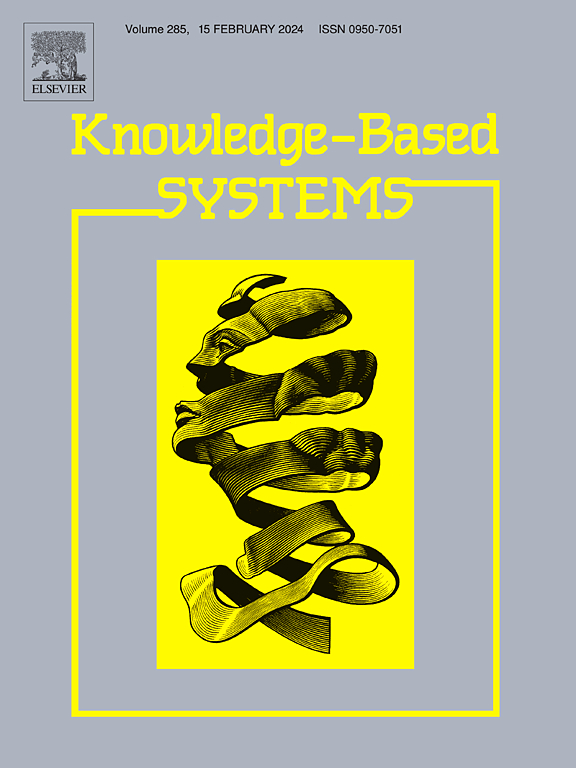SGE: Semantic-guided Generalization Enhancement for Few-Shot Learning
IF 7.2
1区 计算机科学
Q1 COMPUTER SCIENCE, ARTIFICIAL INTELLIGENCE
引用次数: 0
Abstract
In the field of computer vision, learning from limited datasets presents a significant challenge, known as Few-Shot Learning (FSL). Current methodologies have employed semantic information and data augmentation to address insufficient feature representation in limited datasets. However, these approaches often fail to resolve the fundamental data scarcity problem. Additionally, they may inadvertently introduce distributional bias, constraining the utility of semantic features in FSL contexts. To alleviate the issue, in this paper we propose a novel Semantic-guided Generalization Enhancement method (SGE) for FSL. SGE masterfully harnesses robust semantic information by integrating knowledge from diverse pre-trained models. It utilizes semantic cues from class labels to guide both data augmentation and feature extraction processes. Compared to traditional data augmentation techniques, SGE generates augmented samples that are more semantically consistent with the original samples. SGE enables the model to obtain a comprehensive and accurate representation of class characteristics through multifaceted data augmentation of categories. The backbone model adaptively integrates semantic information with image data, and merges the enhanced sample features with the original sample features via a feature fusion module. This allows SGE, guided by semantic cues, to construct a robust class prototype with rich discriminative features. Empirical evidence demonstrates that our framework outperforms state-of-the-art methods across four benchmark assessments. This clearly demonstrates the remarkable efficacy of SGE in leveraging semantic information, thereby exerting a significant influence on FSL. The code is available at https://github.com/zhuyangyang-cjlu/SGE.
基于语义引导的小样本学习泛化增强
在计算机视觉领域,从有限的数据集中学习是一个重大的挑战,被称为Few-Shot learning (FSL)。目前的方法采用语义信息和数据增强来解决有限数据集中特征表示不足的问题。然而,这些方法往往不能解决基本的数据稀缺性问题。此外,它们可能会无意中引入分布偏差,限制语义特征在FSL上下文中的效用。为了解决这个问题,本文提出了一种新的语义引导泛化增强方法(SGE)。SGE通过集成来自不同预训练模型的知识,巧妙地利用了强大的语义信息。它利用来自类标签的语义线索来指导数据增强和特征提取过程。与传统的数据增强技术相比,SGE生成的增强样本在语义上与原始样本更加一致。SGE通过对类别进行多方面的数据扩充,使模型能够获得对类特征的全面而准确的表示。该主干模型自适应地将语义信息与图像数据融合,并通过特征融合模块将增强的样本特征与原始样本特征融合。这允许SGE在语义线索的指导下,构建具有丰富判别特征的健壮类原型。经验证据表明,我们的框架在四个基准评估中优于最先进的方法。这清楚地表明SGE在利用语义信息方面的显著效果,从而对FSL产生显著影响。代码可在https://github.com/zhuyangyang-cjlu/SGE上获得。
本文章由计算机程序翻译,如有差异,请以英文原文为准。
求助全文
约1分钟内获得全文
求助全文
来源期刊

Knowledge-Based Systems
工程技术-计算机:人工智能
CiteScore
14.80
自引率
12.50%
发文量
1245
审稿时长
7.8 months
期刊介绍:
Knowledge-Based Systems, an international and interdisciplinary journal in artificial intelligence, publishes original, innovative, and creative research results in the field. It focuses on knowledge-based and other artificial intelligence techniques-based systems. The journal aims to support human prediction and decision-making through data science and computation techniques, provide a balanced coverage of theory and practical study, and encourage the development and implementation of knowledge-based intelligence models, methods, systems, and software tools. Applications in business, government, education, engineering, and healthcare are emphasized.
 求助内容:
求助内容: 应助结果提醒方式:
应助结果提醒方式:


